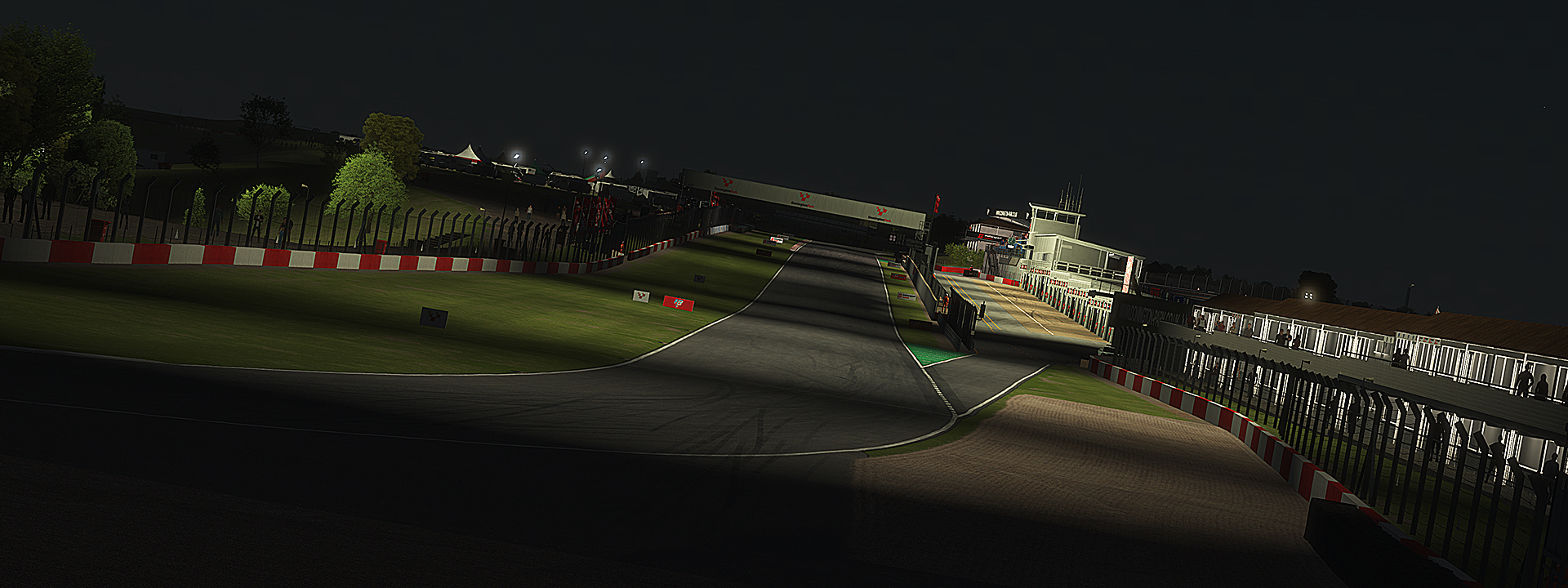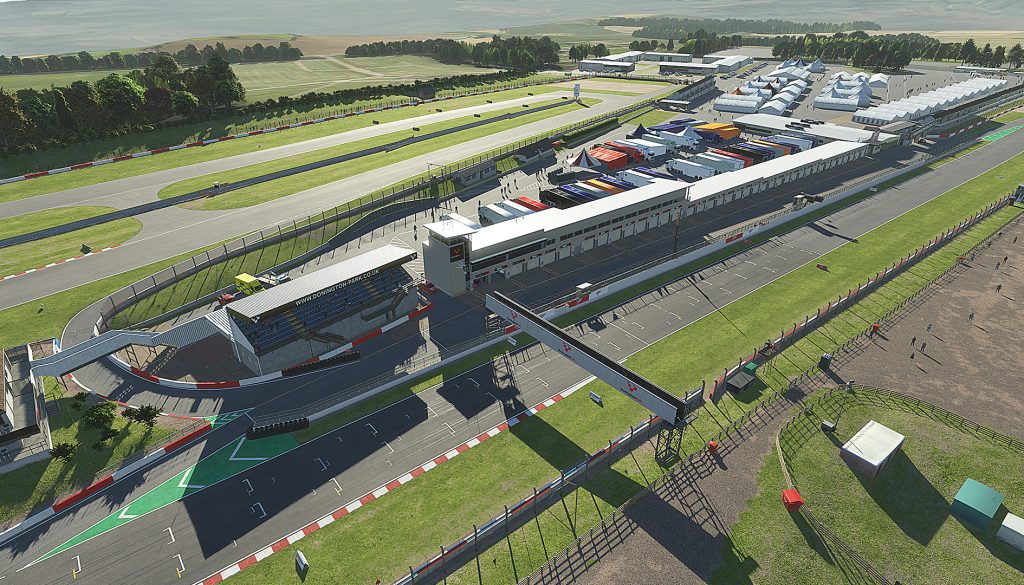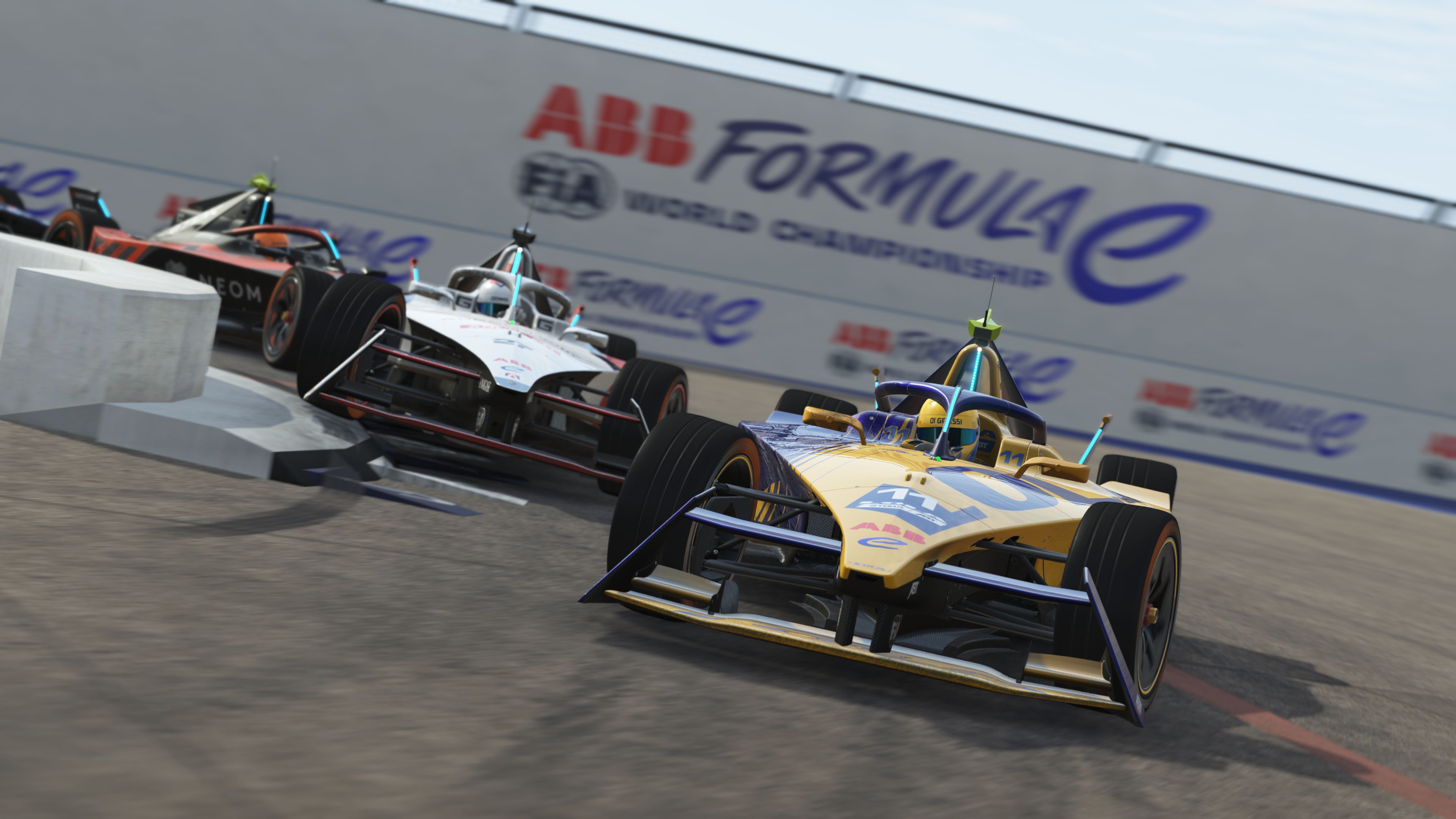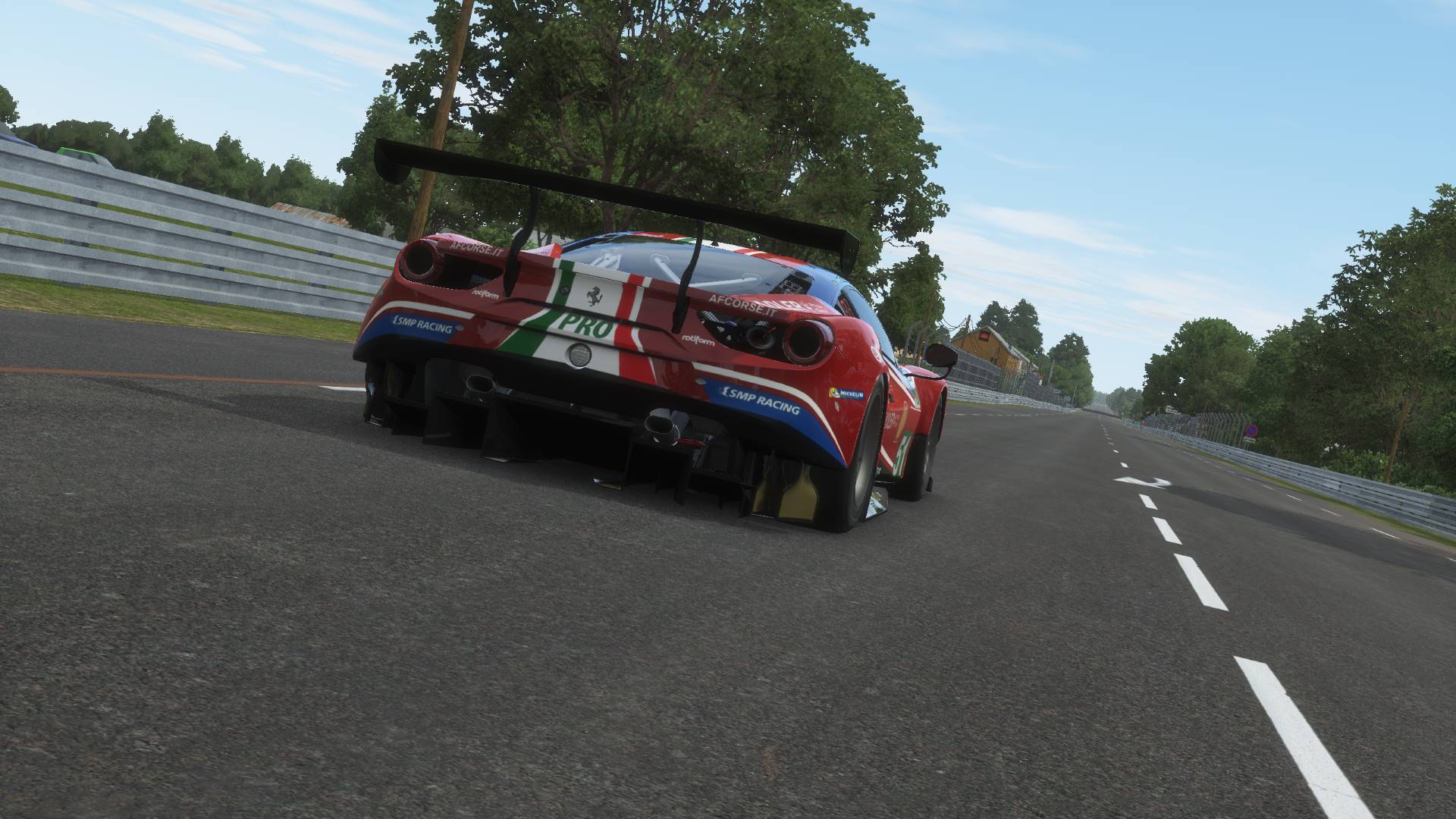Hello sim racers!
Good news for fans of British motorsport, as today we are absolutely delighted to announce that the iconic twists and turns of the Donington Park Grand Prix Circuit are coming to rFactor 2!
In this new content announcement, we are exceptionally pleased to confirm the much requested arrival of Donington Park in to our sim, one of the most highly regarded and popular race circuits in the United Kingdom, and home to such series as the British Touring Car Championship (BTCC), World Superbikes, the Donington Historic Festival and many other National and International grade categories of racing. Having first risen to prominence as a regular on the pre-war Grand Prix schedule, the onset of the second World War would lead to Donington entering a period of disrepair, finding itself like many such venues in the country being repurposed by the British Army to help with the war effort. Following the cessation of hostilities in 1947, Donington Park would take much of the next 30 years to recover as an active racing venue.
Purchased by British entrepreneur Tom Wheatcroft in 1971, the Englishman would spend the next few years investing his own money bringing the circuit back into regular useable condition, as well as relocating his rapidly expanding collection of racing cars into what would eventually become the Donington Grand Prix Collection – the largest collection of Formula One machinery in the world, until its sad demise at the end of 2018 following the death of its owner and founder the previous decade. With Wheatcroft investment and the necessary improvements completed, Donington Park in its modern form would open for business once again in time for the 1977 racing season, utilizing a much changed and considerably safer layout than that of the pre-war Grand Prix configuration of the 1930s. Whilst retaining plenty of the character from the original track, the new Wheatcroft Donington Park was chopped down from the original 5029 km layout to a slender 3.149km configuration, with a further ‘Grand Prix Loop’ added to the circuit in 1986, reviving the original Melbourne Loop section, albeit much shortened from the original track that stretched all the way down into the nearby village of Melbourne itself.
Initially designed with motorbike racing in mind, Donington Park would quickly recapture the imagination of the British racing public, thanks in large part to the natural amphitheatre nature of the spectator banking and exciting layout of the circuit itself, and soon Donington Park would again reverberate to the sound of top level National and International grade racing events. As a long-time friend to Formula One boss Bernie Ecclestone, Wheatcroft would spend much of the following years campaigning to bring Formula One to Donington Park – a long held dream of the Derby businessman – something that the venue achieved in 1993 as Ecclestone agreed a one-off deal to host that seasons European Grand Prix at the midlands venue. Torrential rain would do little to dampen the party atmosphere trackside during the race, with Brazilian legend Ayrton Senna performing what is arguably the finest opening lap in the history of Formula One as he navigated his reluctant McLaren Ford from fifth on the grid to the race lead in seriously difficult circumstances. Despite what was considered to be a broadly successful European Grand Prix, Donington Park would drop off the F1 radar for a number of years at the end of the season, before an ill-judged attempt in 2009 to win the rights to host the British Grand Prix at a newly proposed reprofiled circuit leading Donington into serious financial trouble, difficulties that would result in a period of time that potentially could see the circuit permanently closed as a racing venue – until a rescue effort by the Wheatcroft family finally arrived in a bid to fix the now wildly damaged track and return motorsport to the circuit ahead of the 2011 racing season.
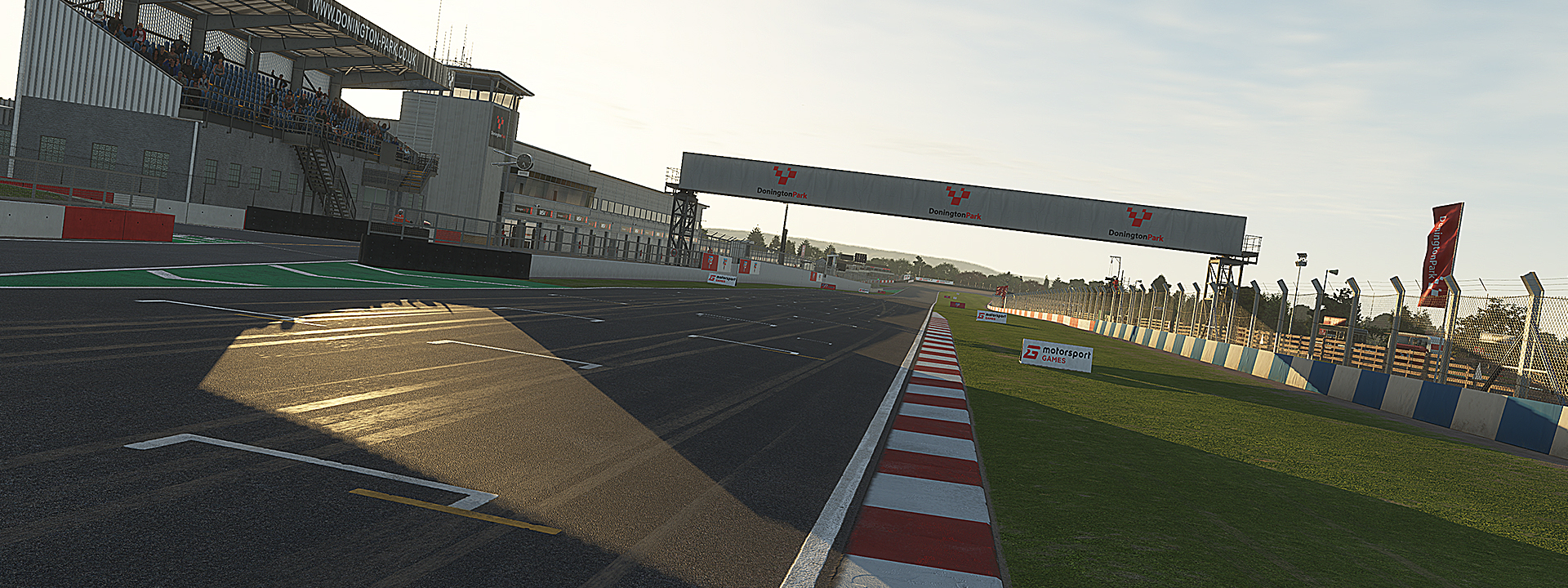
Eventually Donington Park would be sold to former Formula One Grand Prix driver Jonathan Palmer and his MSV organization, with further investment having been lavished on the circuit facilities in order to bring Donington Park in line with the standards of the other MSV controlled venues – adding much needed spectator and competitor refinements to help re-attract many top level international events to the track. Firmly established as one of the top circuits in Great Britain, as well as being highly regarded internationally, Donington Park offers a great mix of undulations, exciting corners and overtaking opportunities that we are sure will be highly appreciated by the sim racing community here at rFactor 2.
The Track
Redgate
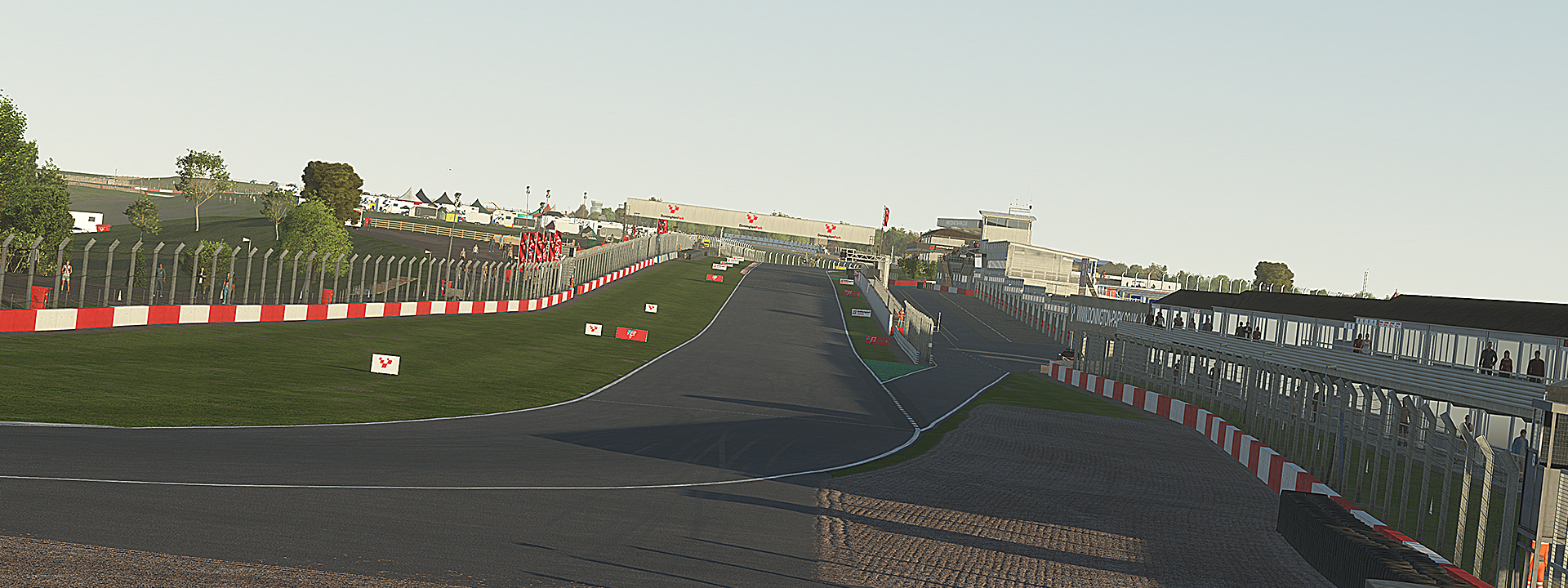
As the opening corner here at Donington Park, Redgate is a critical piece of track to get right in order to carry the speed through the following section at Hollywood, and down into the dramatic sweeps of the Craner Curves. Approached at high speed following the second-longest straight on the circuit, drivers are encouraged to brake deep into the apex of the corner, allowing the car to run out to the very outskirts of the circuit on exit as they bid to unwind as much lock as possible for maximum traction and acceleration through the turn. With such commitment on corner entry possible, drivers will have to be careful not to overcook their approach and run out wide onto the unforgiving grass verge, as deviation too far from the racing tarmac will certainly cost lap time, and can easily lead to spinning the car and collecting the outer retaining walls that line the tarmac.
Hollywood
Named after the adjacent woods that line this leafy midlands circuit, Hollywood is now nothing more than an acceleration zone as drivers head towards the steeply downhill section of the Craner Curves. Although not particularly challenging to drive in any car, the sensation of rising and falling through this section of track makes for a spectacular feeling behind the wheel, as drivers crest the right-hander and get their first glimpse of the imposing right, left, right of the Craner Curves / Old Hairpin section of corners.
Craner Curves
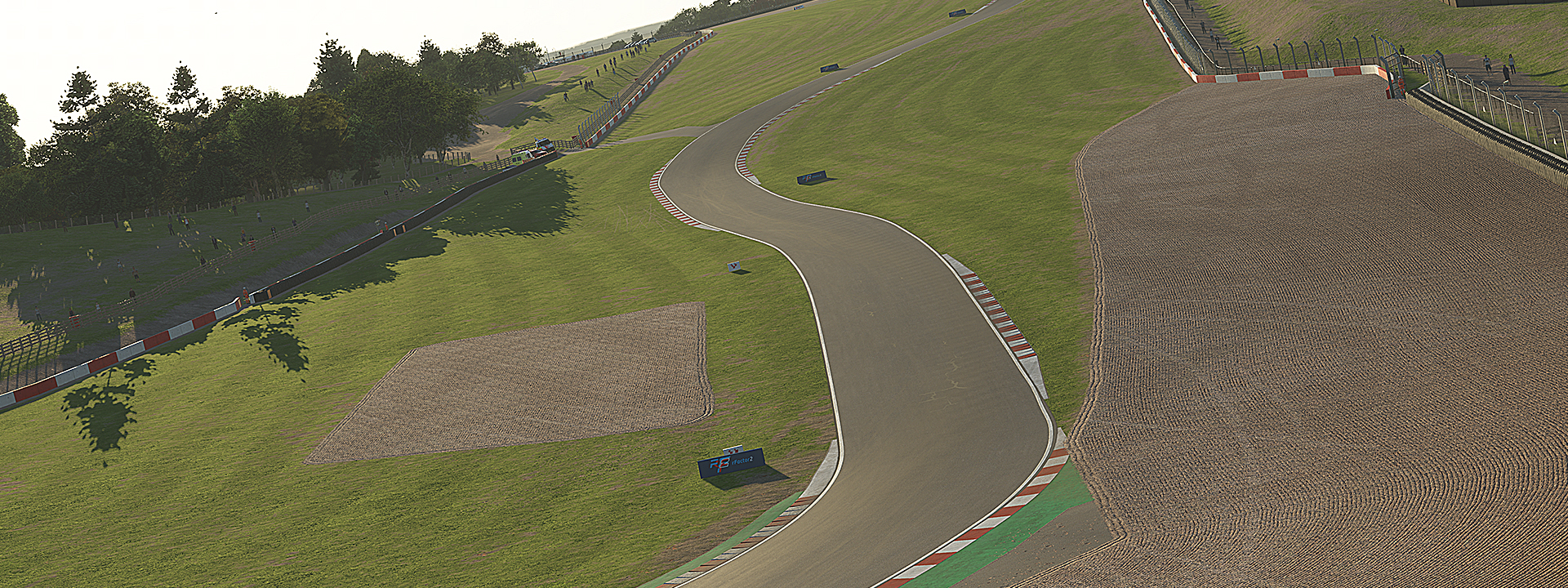
Perhaps the most well-known section of tarmac at Donington Park, and one of the best regarded corner segments in British motorsport, the Craner Curves remain as dramatic a place as any to watch and race cars in the United Kingdom. Approached at full speed following the sweep through the proceeding Hollywood right-hander, here drivers have to practice the fine art of balancing throttle application with a delicate touch of the steering wheel, as many cars will need to scrub off just the right amount of speed as the car goes light over the hill and begins the descent into the Old Hairpin. Watch out for unsettling the car on the run downhill, as any mistakes here will quickly lead drivers to the infield grass banking, where a date with retirement can be the only possible outcome.
Old Hairpin
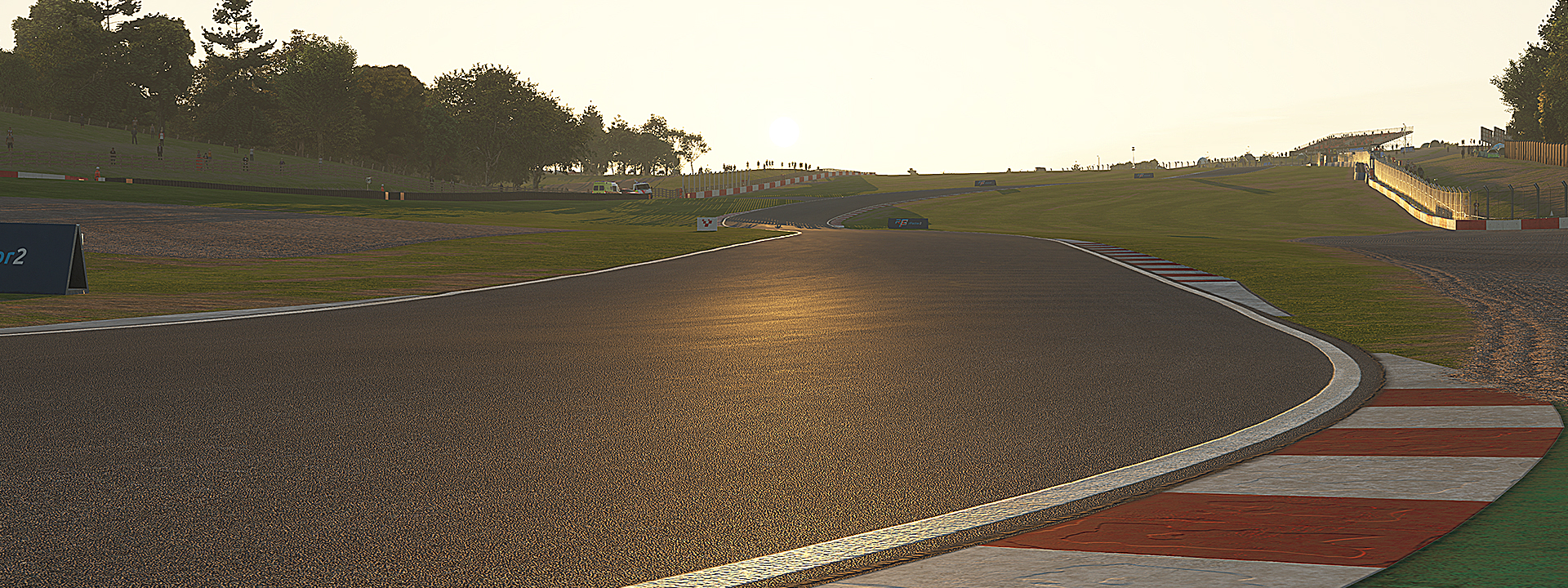
Despite the slightly misleading name, the Old Hairpin is neither particularly old, nor much of a hairpin turn. Approaching at significant speed from the Craner Curves section of track, many cars are capable of taking the right-hander at significant speed, often with shifting down a couple of gears and carrying as much forward momentum through the apex of the turn as possible.
Although the Old Hairpin represents one of the better overtaking opportunities at the Donington Park circuit, most drivers find it advisable to use this corner to earn a run on their rival ahead – using the convenient possibility of extending the circuit width on corner exit to carry the speed-up the approaching hill, and lining up their rival for a late dive under braking into the McLeans corner slightly further around the lap.
Starkeys Bridge
While Donington Park is certainly famous for its sweeping corners, the track also carries considerable history all around the 4020km circuit layout. Having previously hosted Grand Prix greats the likes of Tazio Nuvolari, Bernd Rosemeyer and Rudolf Caracciola, much of that history can been seen on the modern incarnation of the track – most strikingly at the Starkeys Bridge complex where modern race cars pass next to the old underpass that used to see pre-war Grand Prix greats battle it out for racing supremacy. Now very much to the side of the current racing tarmac, the Starkeys Bridge can still be visited by spectating fans, with a modern extension connecting to the historic arches and passing over the current racing configuration.
Schwantz Curve
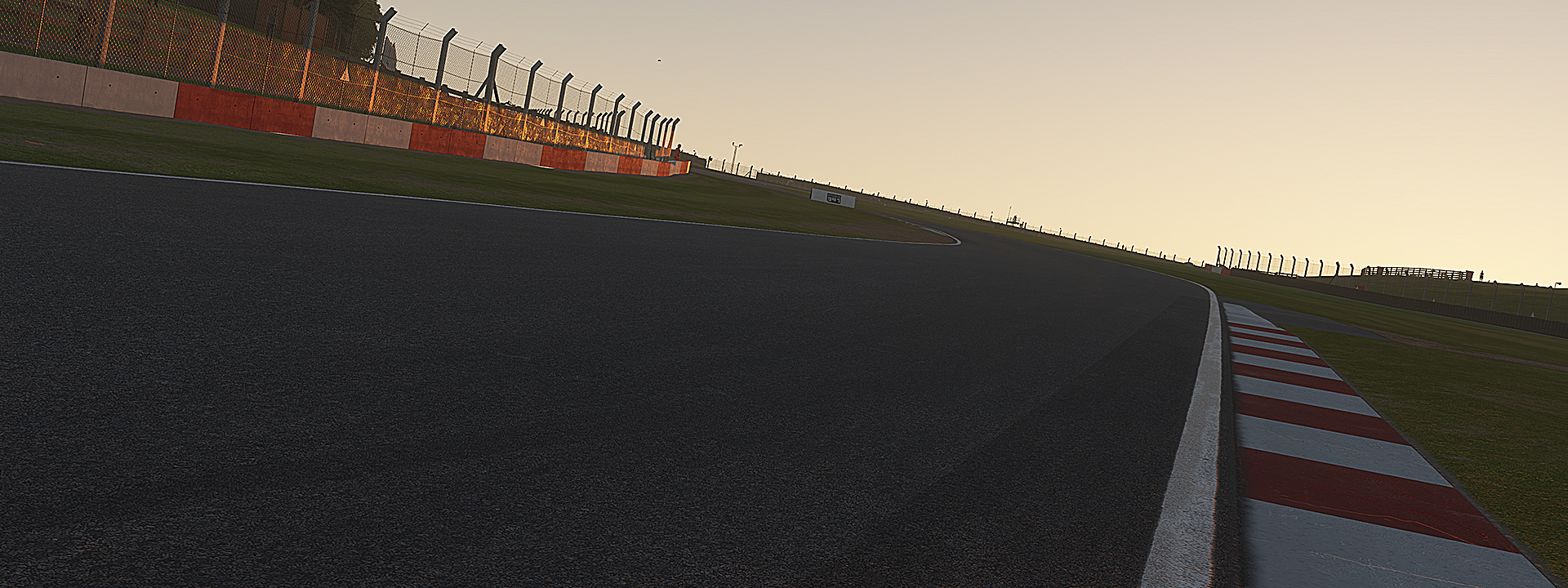
Named after motorcycle great and fan favourite rider Kevin Schwantz, this sweeping uphill left-hander is an easy flat out corner in most modern racing cars, providing little in the way of a challenge ahead of the blind entry into the backstretch of the circuit, as drivers prepare their approach to McLeans, and the beginning of the fastest part of the Donington Park Grand Prix Circuit.
McLeans
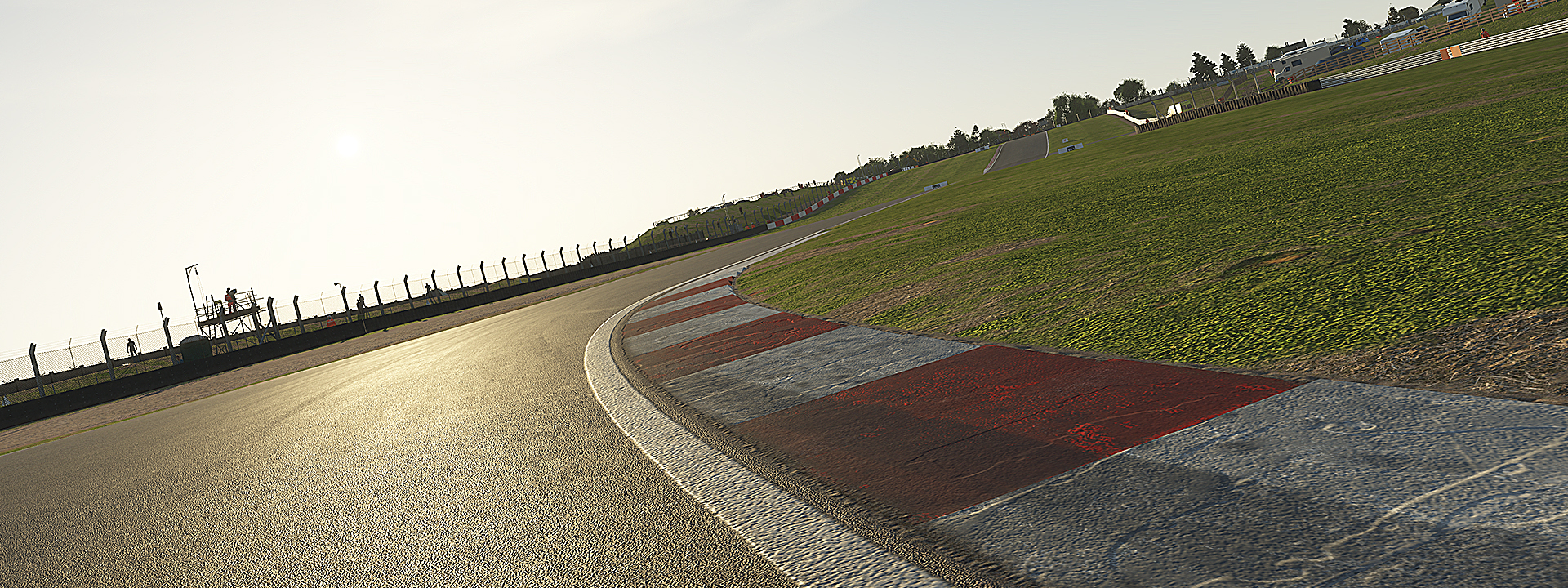
Arguably one of the most deceptively difficult corners of the circuit, at McLeans drivers can easily win or lose considerable amounts of lap time in a corner where overtaking is certainly possible, and the chances of making a small mistake are alarmingly easy to do. Requiring a significant reduction in speed and up to three downshifts, the right-hand turn at McLeans can easily unbalance a car and induce unexpected oversteer moments, often pulling a driver too deep into the apex and unsettling the car over the raised curb on the inside of the turn. Should drivers manage to avoid that fate, it is disturbingly easy to under rotate the car and find yourself quickly running out of tarmac on corner exit, which at best will heavily compromise your speed onto the preceding short straight, and at worst will take you onto the surrounding gravel run-off, potentially losing significant amounts of time to your rivals on track.
Coppice
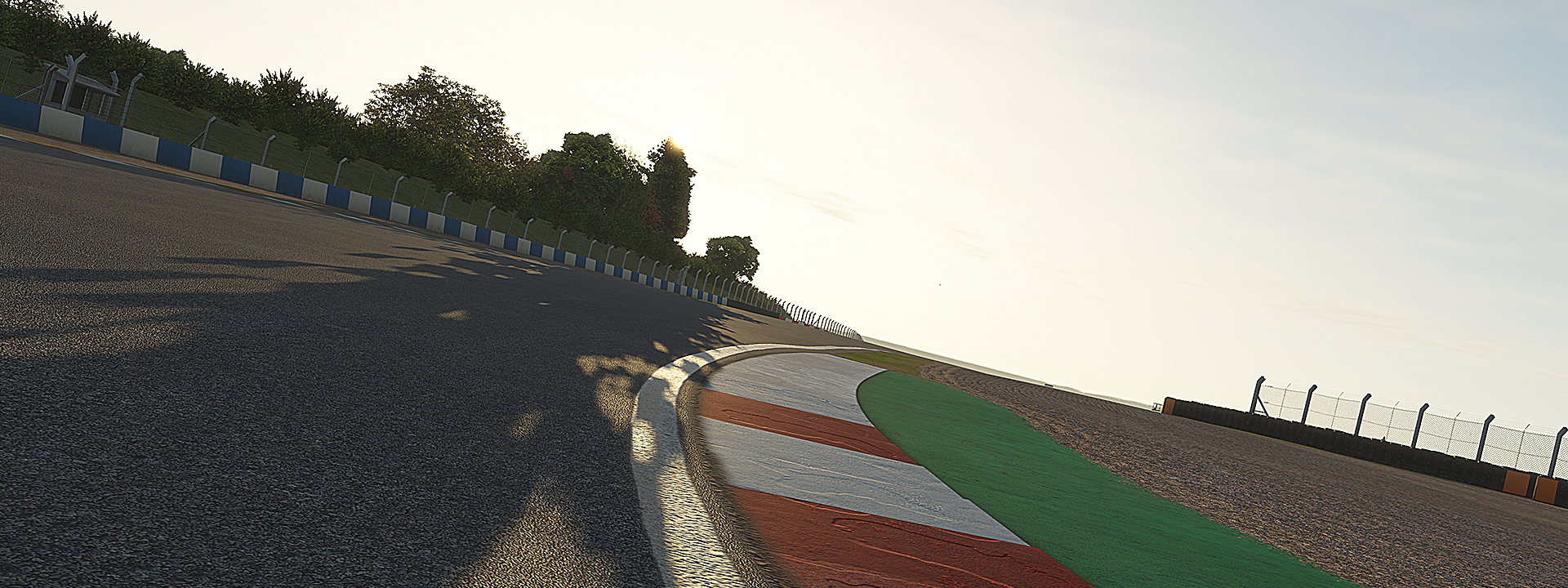
Much like the previous McLeans corner, Coppice is deceptively difficult to get right in any type of race car here at Donington, with the added jeopardy of the corner leading onto one of the longest straights of the entire lap – get this corner wrong and you will be giving away significant amounts of laptime down the following straight, and making yourself exceptionally vulnerable to attack at the approaching Foggy Esses chicane.
Again, Coppice can present an enticing overtaking opportunity for drivers brave enough to give it a try, however this is certainly one of the more difficult corners at Donington Park, and one that requires a level of precision, patience and confidence from anyone who is looking to wrestle the very best lap time possible from the circuit.
Fogarty Esses
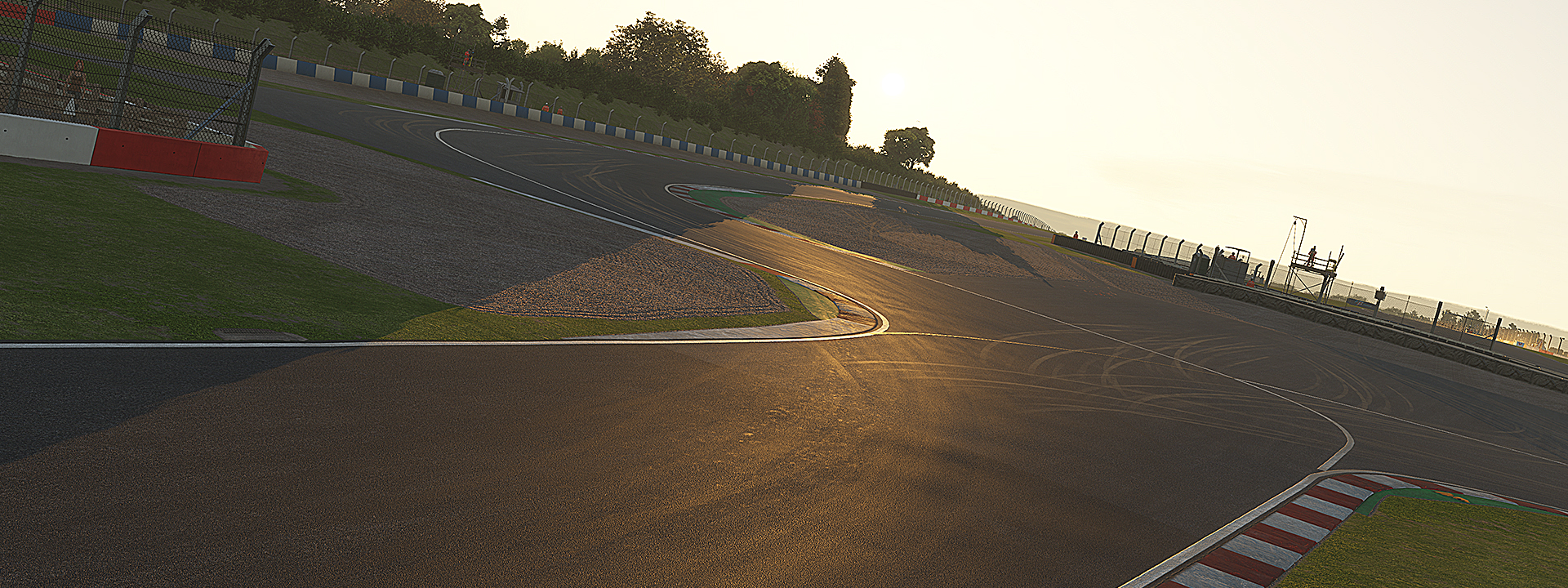
Certainly one of the clearest overtaking opportunities presented to drivers on the Donington Park venue, the Fogarty Esses (or Foggy Esses as it is more commonly known) is a traditional left, right chicane sandwiched between two medium length straights. Approached at something nearing top speed, drivers have ample time to line up an overtake thanks to the removal of the famous Dunlop Bridge, with clear lines of sight into and out of the chicane possible right from the very start of the exit of Coppice. As a reasonably tight chicane, Foggys does benefit from low level curbing, allowing drivers the opportunity to really attack the corner and use significant amounts of curb in their quest to straighten up the chicane as much as possible, and increase the speed for the long run down into the following Melbourne Loop hairpin.
Melbourne Loop
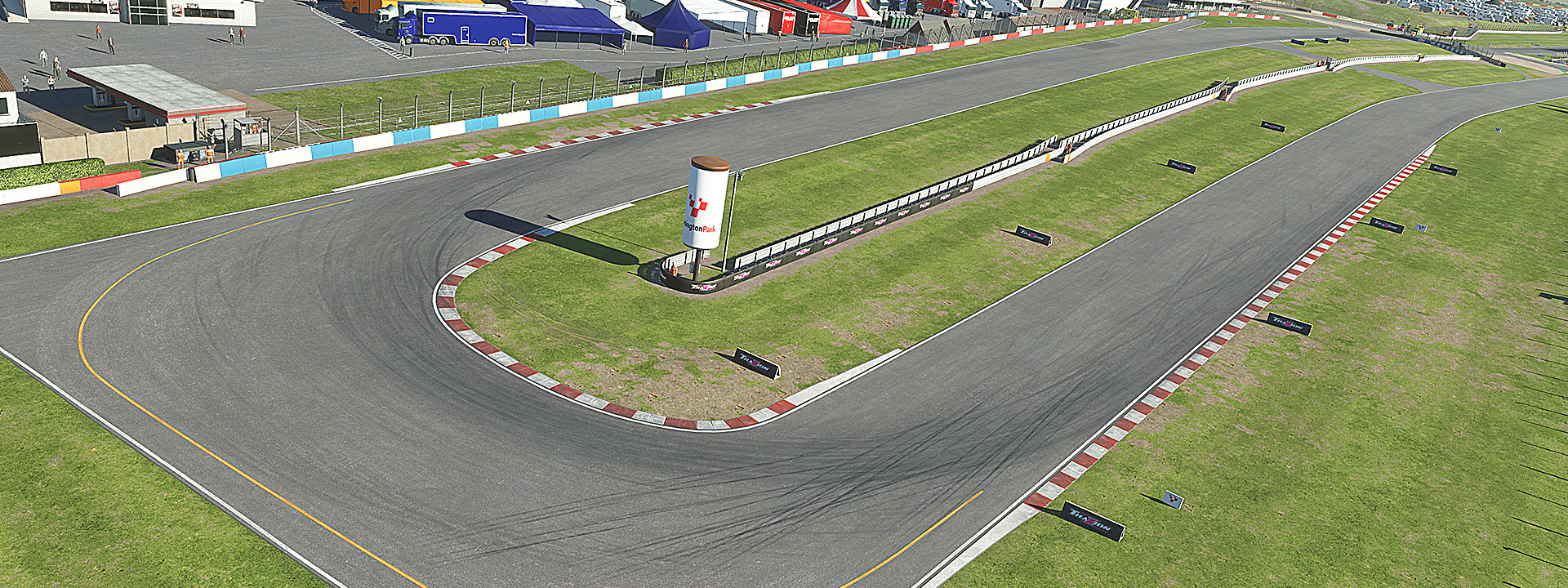
Another exceptional overtaking opportunity, the Melbourne Loop is a traditional right-hand hairpin corner, and is often the scene of many successful overtaking manoeuvres from drivers keen to find a way past slower rivals. Reduced in size considerably from the original Melbourne Loop that formed part of the original circuit, the modern version of this ‘Grand Prix’ addition to the track in approached from a long downhill straight, quickly sweeping to the right before the drivers have to once again climb back up hill and past the old pit lane entry, before getting hard on the brakes for the final Goddards corner. Surrounded by gravel traps should you overshoot your marks and run wide, this is a simple but very important corner to get right, and one that should pay dividends to drivers who are brave on the brakes, and gentle enough on throttle to minimize wheelspin on corner exit, on their way up to the end of the lap.
Goddards
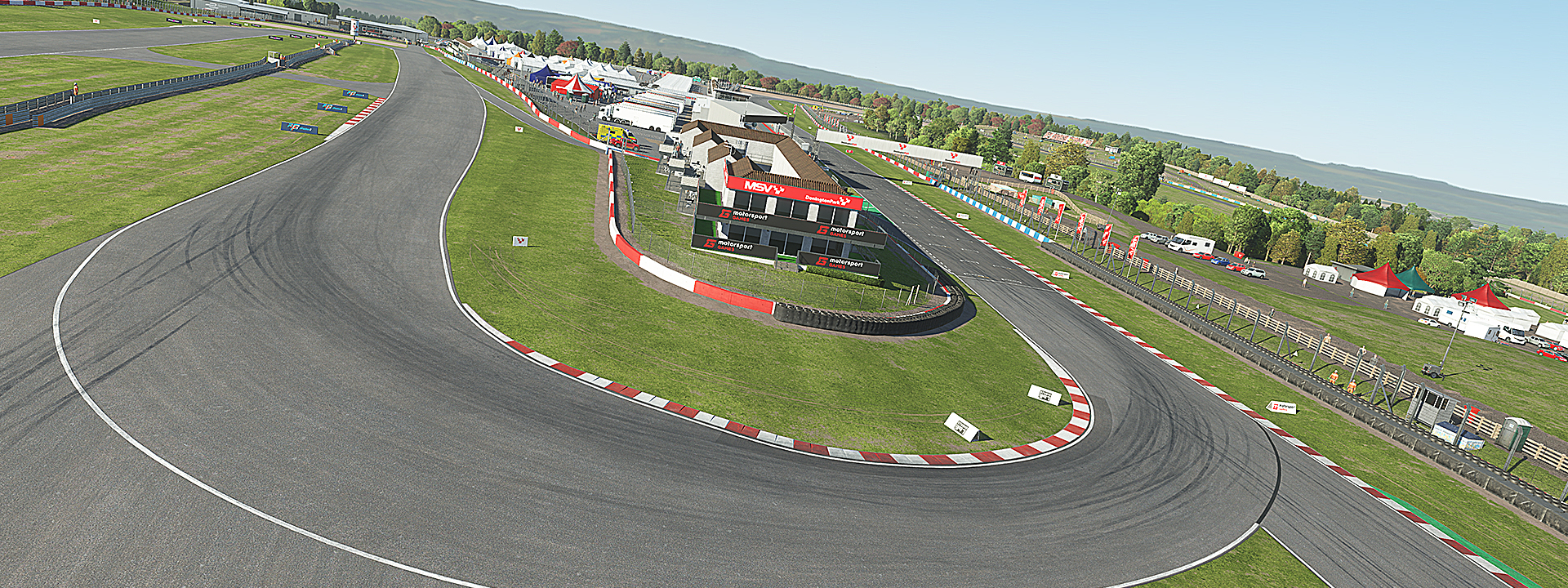
As the final corner of the Donington Park Grand Prix Circuit lap, Goddards presents another very fine overtaking opportunity for our drivers, as well as a great chance to make up lap time on the tricky downhill braking zone into the corner. Here, drivers will need to balance the ever present enthusiasm to push the braking too late into the corner, as it is vital to get a clean run off the turn and onto the Wheatcroft start / finish straight to end the lap. A good overtaking opportunity here can be had either under braking, or more traditionally by forcing the driver ahead to defend into the corner, and out dragging your rival on exit for a pass into the first turn at Redgate.
Benefitting from a full new laserscan and thousands of reference materials, this new track addition for the simulation will represent the most modern and up-to-date version of the track in sim racing, and we can’t wait to tell you more about it and let you try out the circuit for yourselves in the coming weeks.
Exciting times ahead!
Donington Park Grand Prix Circuit – coming soon to rFactor 2
